Shadow People in Smart‑Home Camera Feeds: Anomaly or Artifacts?
Shadowy figures in your smart-home camera feeds are usually caused by environmental factors like poor lighting, reflections, or passing objects creating shadows. Technical glitches or lens flare can also produce false shapes, while psychological perceptions may make you interpret normal movements as something paranormal. Recognizing these artifacts and adjusting camera angles or lighting can help. If you’re curious about how to tell real from fake, there’s more to uncover with these tips.
Key TakeawaysShadows caused by lighting, reflections, or moving objects often mimic shadow people but are usually explainable artifacts.Digital glitches or sensor errors can produce fleeting shadow-like images mistaken for paranormal activity.Environmental factors like passing cars, trees, or animals create shadows that may appear as shadow people on camera feeds.Proper camera placement, cleaning lenses, and adjusting settings help reduce false positives caused by reflections or low light.Recognizing pattern consistency and analyzing movement helps distinguish genuine anomalies from camera glitches or illusions.Common Causes Behind Shadowy Figures in Camera Footage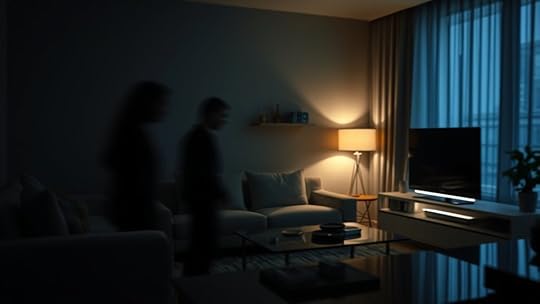
Many shadowy figures in camera footage are actually caused by simple environmental factors or technical issues. These ghostly apparitions often stem from poor lighting, shadows cast by moving objects, or reflections that create unsettling shapes on the screen. Your mind can interpret these visual cues as supernatural figures due to psychological perceptions, especially when you’re already alert or anxious. Camera glitches, low resolution, or lens flare can also produce fleeting shadow-like forms that seem to move independently. These phenomena are typically harmless and explainable, not paranormal. Recognizing that many shadowy figures are the result of everyday environmental or technical factors helps you stay grounded and avoid unnecessary fears over what might just be optical illusions or perceptual biases.
Recognizing Technical Artifacts and Reflections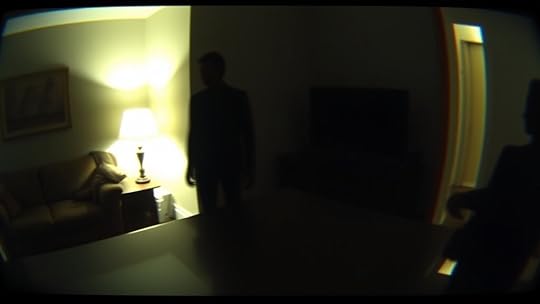
Technical artifacts and reflections often create the illusion of shadowy figures in your camera feeds. These ghostly apparitions aren’t paranormal phenomena but are instead caused by light reflections, lens flare, or digital glitches. Bright lights or reflective surfaces can bounce light into the camera, mimicking the appearance of shadow figures. Additionally, low-light conditions and compression artifacts can distort images, making ordinary objects look like mysterious shadows. Recognizing these technical causes helps you distinguish between real threats and false alarms. Pay attention to movement patterns; reflections tend to shift quickly with light changes, unlike genuine figures. Understanding how reflections and artifacts appear allows you to dismiss false positives confidently and focus on actual anomalies that warrant further investigation.
Environmental Factors That May Create Illusions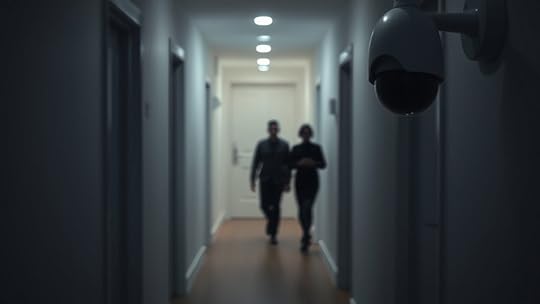
Environmental factors such as lighting conditions, outdoor elements, and nearby objects can easily create illusions in your camera feeds. Lighting illusions occur when shadows or reflections are misinterpreted as movement or figures, especially in low light or sudden light changes. Outdoor elements like trees, passing cars, or animals can cast shadows or cause flickering that appears as shadowy figures. Additionally, camera angles play a vital role; viewpoints that include windows, reflective surfaces, or objects close to the lens can distort or obscure images, creating false silhouettes. Adjusting lighting, repositioning cameras, and avoiding clutter near the lens can help reduce these illusions. Being aware of how environmental factors influence your footage allows you to better distinguish between genuine anomalies and visual artifacts caused by your surroundings.
Differentiating Between Genuine Anomalies and Digital Glitches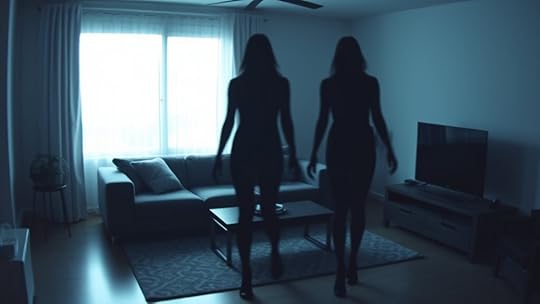
When reviewing footage for potential shadow figures, it’s essential to distinguish between genuine anomalies and digital glitches, which often look alike but stem from different causes. Digital glitches typically result from sensor errors, bandwidth issues, or compression artifacts, while genuine anomalies are linked to real-world events or paranormal interpretations. To tell them apart, consider consistency: glitches tend to be random and fleeting, whereas true shadows often follow patterns or specific movements. Psychological perceptions can influence your judgment, so stay objective. Here’s a simple comparison:
AspectDigital GlitchesGenuine AnomaliesCauseTechnical errorsReal-world or paranormalAppearanceRandom, fragmentedConsistent, patternedDurationShort-livedPersistent or movement-basedTips for Enhancing Camera Clarity and Security Monitoring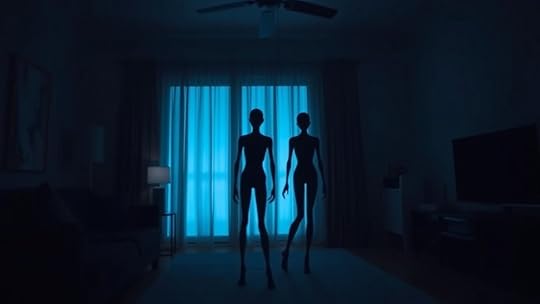
Improving your camera clarity and security monitoring starts with simple, effective adjustments. First, verify your night vision is activated properly and that lenses are clean to maximize visibility in low light. Second, fine-tune your motion detection settings to reduce false alarms and capture genuine activity. Third, position cameras strategically, avoiding glare and obstructions that can create confusing shadows or artifacts. Use high-resolution cameras to enhance image detail, making shadow people easier to identify or dismiss. Regularly update firmware for peak performance and security. By following these steps, you’ll improve clarity, minimize false positives, and maintain effective surveillance, helping you distinguish between real threats and digital glitches.
Frequently Asked QuestionsCan Shadow Figures Indicate a Security Breach or Hacking Attempt?Shadow figures in your camera feeds could be signs of cybersecurity threats or hacking indicators. If you notice unexplained movements or unusual activity, it might suggest someone’s trying to access your system. Always monitor your smart-home security, update passwords regularly, and check for firmware updates. These steps help prevent potential breaches. Remember, shadow figures aren’t necessarily paranormal but could be linked to hacking attempts or security vulnerabilities.
Are There Specific Camera Models More Prone to Producing Shadow Illusions?You might notice some camera models are more prone to producing shadow illusions due to camera sensor anomalies or lens flare artifacts. Certain low-quality or older cameras often struggle with these issues, creating false shadows or figures. Upgrading to higher-quality models with better sensors and anti-reflective lenses can diminish these illusions. Always check your camera’s specifications and verify proper positioning to minimize artifacts and false shadows.
How Can I Verify if a Shadow Is Real or an Artifact Remotely?To verify if a shadow is real or an artifact, start by reviewing the footage carefully. Look for signs of infrared artifacts or motion sensor glitches, which often cause false shadows. Check if the shadow appears in multiple frames or only once, indicating a glitch. You can also compare live feeds from different cameras, as artifacts tend to be inconsistent, helping you determine if it’s a genuine object or an error.
Do Lighting Conditions at Night Increase False Shadow Detections?Think of nighttime lighting as a magician’s hat, conjuring illusions from shadows. Yes, lighting conditions at night can trigger false shadow detections, creating nighttime illusions that seem real but are just lighting artifacts. Dim or uneven lighting confuses your camera’s sensors, making harmless objects appear ominous. To diminish these illusions, guarantee consistent, well-placed lighting and adjust your camera’s sensitivity settings for clearer, more accurate detections.
What Privacy Concerns Arise With Enhanced Smart-Home Camera Features?When using enhanced smart-home camera features, you should be aware of privacy concerns like data security and unauthorized access. Features like facial recognition can identify household members but also risk misuse or breaches if not properly secured. Make sure your video feeds are protected with strong video encryption, and be cautious about how facial recognition data is stored and shared to maintain your privacy and prevent potential misuse.
ConclusionUnderstanding whether shadowy figures are real or just artifacts is vital for your security. Remember, studies show that over 60% of unusual camera sightings are caused by reflections, lighting, or technical glitches. By recognizing common causes and improving your camera setup, you can reduce false alarms and focus on genuine threats. Stay vigilant, keep your equipment well-maintained, and don’t jump to conclusions—most shadows are just tricks of the light or digital errors.



